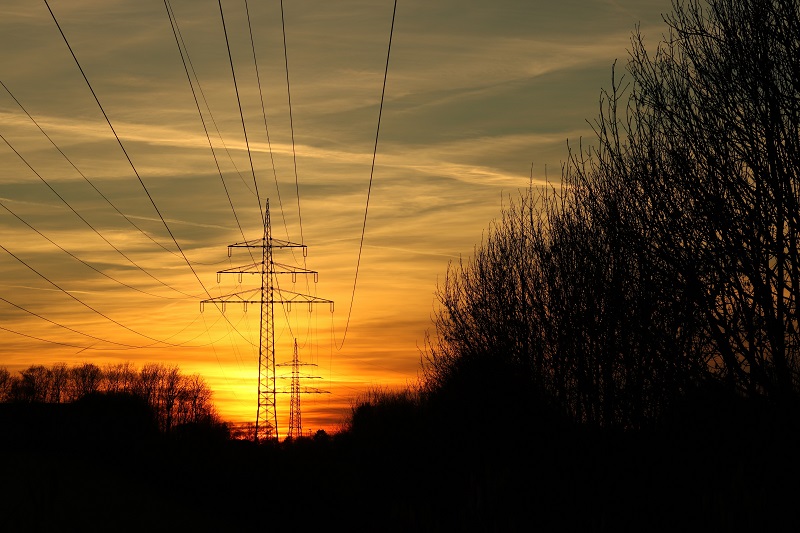
Keeping your decarbonisation plans moving in the light of grid delays
As the nation marches on towards its net zero goals, the number of new connection applications to the National Grid has surged, as heavy industries aim to reduce their emissions as much as possible. Whilst this seems very positive on the face of things, it’s becoming woefully clear to applicants that the current National Grid infrastructure is unfit to cope with the demand. Some District Network Operators (DNOs) are quoting as late as “2035” or “2037” for likely connection dates, in line with the guidelines they are being given by the National Grid.
Much of the demand for energy is due to large-scale battery projects which will absorb all available import and export capacity on the substation they plan to connect to, as well as larger grid scale renewables. For these projects to go ahead, the substations in question require significant upgrades to prevent them going into ‘red’ condition and the upgrades then take several years to complete. The G99 application process works on a first-come, first-served basis, so if your business has not yet applied, you will be put to the back of the connection queue, adding very long delays to your sustainability plans.
On top of this, companies which haven’t yet applied for a grid connection are being put off by the long and somewhat complicated nature of the application process. Currently the application process for connections over 1MW is at least 12 months and there is no guarantee that a connection will be offered at the end of this. Bearing in mind that the UK has signed up to legally binding targets to decarbonise, it really is a major national crisis that the National Grid is in this position.
The implications for industry are widespread, as companies that have planned to decarbonise in the coming years are having to water down their plans. Under present circumstances, for those firms developing technology to support decarbonisation, it could be that they find there is no real market for their products, as companies will be unable to adopt them due to the lack of grid capacity. Even for those companies which already have green technology in place, there will be a knock-on effect. Electric vehicle recharging for example will likely struggle to expand, which will then hinder the roll out of electric trucks as well. It is also possible that the continued roll out of funding from the Industrial Energy Transformation Fund (IEFT) will be paused as the lack of grid capacity prevents larger projects from being connected. In light of these issues, it is imperative for companies wishing to apply for connection to do so as soon as possible, in order to gain certainty about where they stand.
The good news is that there are things businesses can do in the meantime to increase energy efficiency onsite and encourage a prompter resolution of the situation. It is somewhat heartening that the National Grid is acknowledging the problem and in response it has put together a Five Point Plan to try and start addressing the delays. If your business is being affected, it’s worth looking into the National Grid’s plan to familiarise yourself with where things are going.
Practically speaking, if your company is to remain committed to reducing carbon emissions, you will need to be prepared to adapt plans in the short and medium term. It may be a case of finding carbon and cost reducing solutions that do not require a grid connection, but which are still viable options for your business, such as heat recovery or infrastructure upgrades. You could also differentiate between critical and non-critical loads, and supply the latter off-grid. The critical loads remain grid connected to ensure resilience for when generation is not available.
Another approach would be to negotiate a phased rollout of your project over a more gradual timeframe. In any case, the seriousness of the current situation is such that any company planning to decarbonise should expect that their plans for the next 12 years or so will not be fully achievable unless they adopt innovative solutions.
A final, but important thing you can do to improve your chances of connection and raise awareness of the issue is to apply political pressure. This could involve contacting your local MP and council. After all, whilst the current stagnation is a major issue for international competitiveness, at a local level, connection to the grid in any business can have a positive impact in terms of providing local jobs and boosting the local economy. Leading provider of energy reduction solutions & Cold Chain Federation member On-Site Energy has found that this has been effective on a number of occasions. For example, with backing from a local MP, On-Site Energy was able to negotiate a change of connection point for a business involved in heavy industry, after the 4MW CHP connection they had applied for was initially refused.
David Kipling from On-Site Energy commented: “Whilst grid services clearly need to be addressed, what is needed now is a policy shift from the Government to re-prioritise the G99 application process, giving priority to applications that create local impact and which support local jobs.”
Whilst there is much noise and indeed mounting pressure in society for manufacturers to improve their energy efficiency, under current UK law there isn’t anything the DNO or the National Grid can do to actually compel a reduction in usage onsite. Perhaps this will prove to be beneficial in the long-run and lead to energy efficiency becoming a higher priority in corporate plans.
On-Site Energy enables energy intensive manufacturers to reduce their energy costs and emissions through innovative solutions.
To learn more about how On-Site Energy can help, visit, https://on-site.energy/

Comments are closed.
